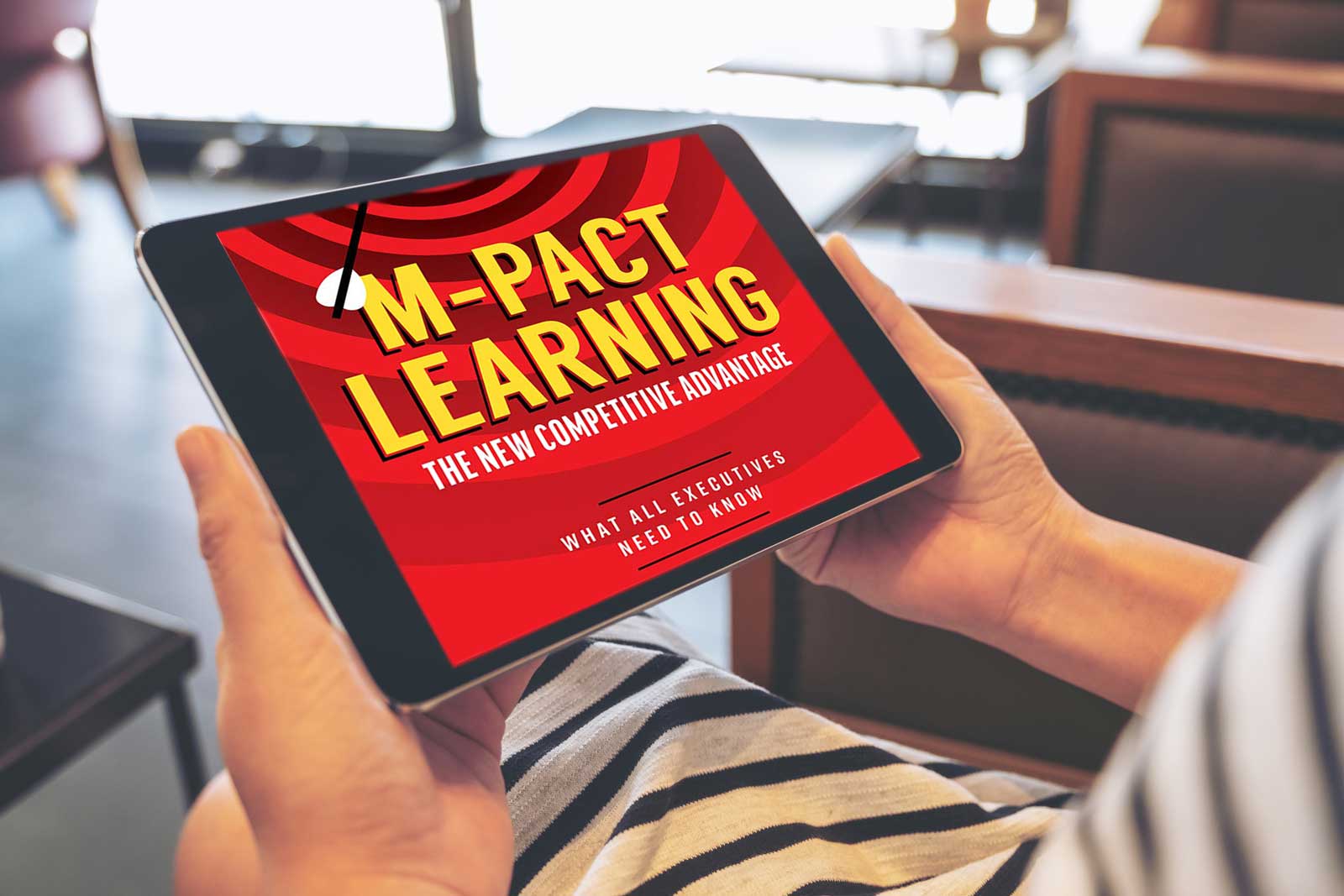If you follow this blog regularly, you have read about how M-Pact Learning outperforms traditional training. Along the way, you have learned a good deal about why it can create a competitive advantage. If you are new to the blog, today’s edition offers a good introduction to M-Pact Learning. I’ll be sharing why works and how it can transform the learning experience for your employees.
How M-Pact Learning Works
M-Pact Learning is a systematic, comprehensive process rooted in effective instructional design, focused on achieving measurable business results. It takes a holistic approach to learn design, recognizing that to be effective, learning not only must be engaging, but it must also combine a blended approach of applying multiple learning strategies. We constantly keep desired learning outcomes in mind as we develop approaches to material, which ensures understanding and retention.
So, when approaching a new client, how do we move from their current traditional training approach to an innovative, highly effective learning solution like M-Pact Learning? When transforming an existing training program, we start with a systematic and comprehensive analysis of how you currently train. This includes an examination of your overall program structure, competencies and objectives, the blend of instructional approaches, use of technology, the effectiveness at meeting business goals, how you measure the skills and knowledge of the participants, who your trainers are, what resources you have available, and if you need to train a global audience.
From there, we use our expertise in instructional design to develop a custom learning program that addresses all the above categories and then adds features that detail what the program will cost, a systematic strategy for how it will be implemented, and details on how learners will be assessed. To meet all of a company’s needs, M-Pact Learning applies the principles you’ve read about in other installments of this blog (I’d encourage you to view topics in the blog history where you want more details), including:
- Hands-on learning in real and simulated environments
- Blended teaching approaches
- The use of a mix of instructional technologies, each appropriate to different learning needs
- A focus on problem-solving to achieve learning that can be immediately applied and that pushes far beyond memorization
- Interactive and collaborative learning approaches
- Structural support devices and follow-up tools for learners to apply after completing training
M-Pact Learning: A Competitive Advantage
You can see from this list how truly comprehensive M-Pact Learning is. As a result, the learning design programs we create for clients will always deliver measurable business results and create direct connections to their current and future business initiatives. M-Pact learning can deliver on these business strategies because it focuses on the learner and not the instructor. It originates from an understanding of how people learn and what a business needs to accomplish with its educational programs.
In the end, there’s no real comparison between traditional training approaches and M-Pact Learning’s transformational educational experiences. To try to do so would be like comparing a single-prop Cessna to a Learjet. I don’t think I have to ask which plane you’d rather take for a test flight.
Intrigued? Contact S4 NetQuest for more information or purchase my book, M-Pact Learning: The New Competitive Advantage.
